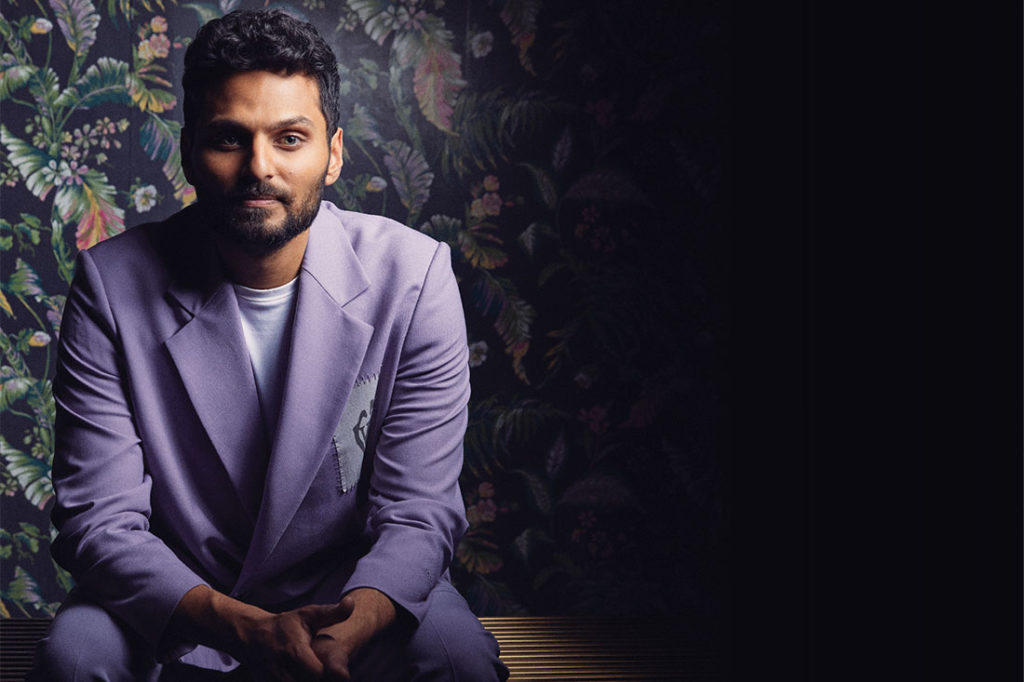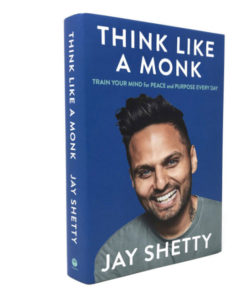It’s a funny thing, to watch a former monk get his hair done. Jay Shetty is sitting 40 feet above West 23rd Street in Manhattan’s bustling Flatiron neighborhood, patiently letting a stylist prep his hair—brushing, combing, fluffing, tousling, making tiny touch-ups with electric clippers. In some sense, there’s only so much that can be done, or should be. Shetty arrived at this event space for this magazine’s cover shoot a few short hours after an appearance on national TV. His full beard is manicured, and the bloom of dark curls atop his head are held in check by a fade around his ears. His gray eyes glint in the sunlight as he juggles questions, all while holding himself statue-still.
“I had a shaved head for three years,” he jokes between mustache buzzings. “It was easier in some ways.”
Shetty thrives at the intersections between competing ways of being. He has built himself into a bona fide star as a speaker, author and life coach, ascending on his charisma, formidable work ethic and ability to make ancient spiritual teachings feel accessible to a broad audience.
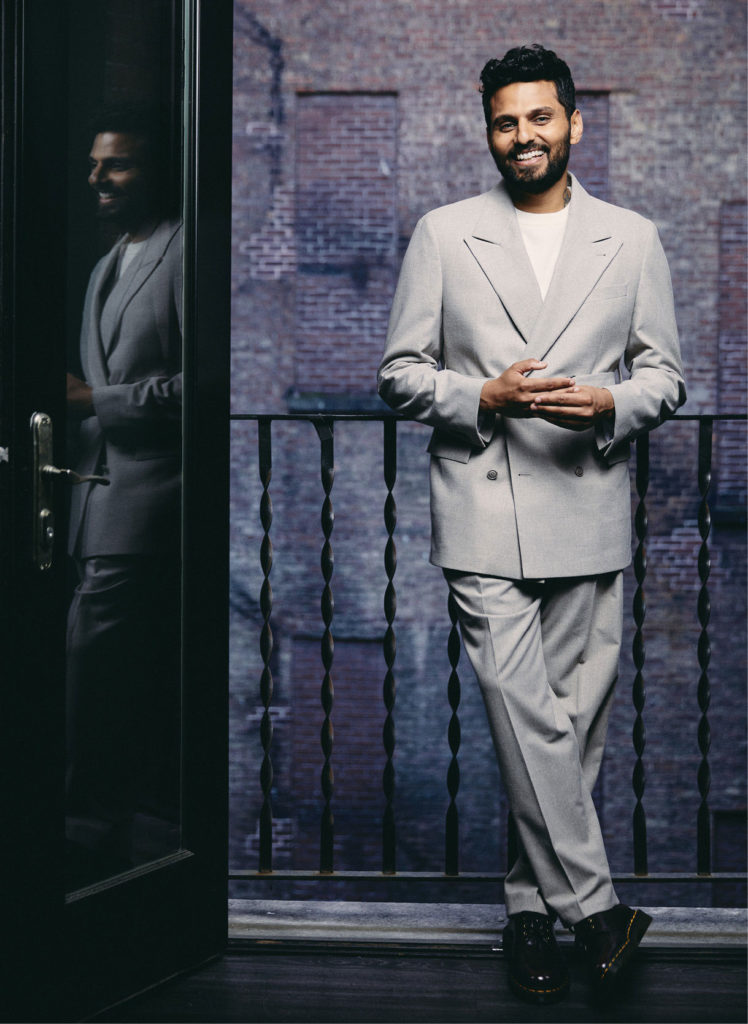
His biography plays a huge role in that ability. After a childhood in London in and out of trouble, he attended business school and dreamed of a workaday middle-class existence before meeting a Hindu monk who was giving a talk at Shetty’s university. Captivated by the man’s radiant calm and happiness, Shetty introduced himself and eventually found his way to an ashram in India where he spent some three years living in conditions most of his audience now would consider deprived: hand-washing his robes, sleeping in a building made of cow dung, waking before dawn to take cold showers, meditating, studying, fasting.
When it became clear to Shetty and to his fellow monks that his purpose would be best served outside that monastic existence—that he should leave and pursue the sorts of passions in which he now thrives—he initially found himself heartbroken and adrift. Yet it turned out there was a market for someone who had immersed himself in the sacred, ancient teachings of the Bhagavad Gita, lived the life of a true ascetic, and returned to the short-attention-span Western world to help the rest of us make sense of ourselves and our surroundings. Shetty threw himself into communicating his learnings, via speaking engagements and a knack for making inspirational viral videos. In short order, he became not just a guy suddenly free to grow out his hair, but a full-blown sensation.
* * *
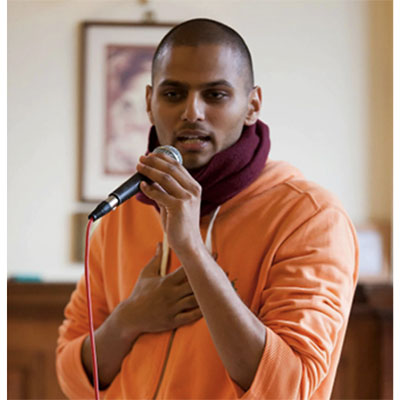
Now, if you’re following Brand Jay Shetty, it’s worth wondering where an ex-monk goes after joining a what-have-you-done-for-me-lately media landscape. The world is full of successful people whose former lives seem to overshadow their current states: ex-athletes, ex-models, ex-military, ex-CEOs. Certain things, you just get to bank on—at least, until you don’t. Seemingly, there’s only so long you can run out the string on being an ex-monk, especially when you lived in an ashram for years. By your mid-30s, it’s a bit like being an ex-child actor, or an ex-undergrad for that matter. Most of us don’t suffer the pressure to reinvent ourselves after a period, given that most of us stay comfortably out of the churn and crush of the limelight. We type out a few tweets, maybe some Instagram stories, a Facebook update here and there, maybe dabbling on TikTok, dropping a LinkedIn post now and again to let people know we clean up nice—that’s about all the mental energy we need to devote to our personal brand. Jay Shetty is not most people. He turns 35 this September, and after an admittedly meandering start as a student and as a monk, he’s still a young man in a hurry. In fact, he’s hitting the age at which his vocation—to bring ancient wisdom to a popular audience—seems less precocious and more like growing into a venerated role.
The difference between Shetty and most of us doing our best not to get trapped on social media: Shetty’s doing big numbers. On Instagram, he counts almost 11 million followers. On Facebook, 12 million. Add to that more than 300,000 followers on Twitter and 400,000 subscribers on the YouTube channel for his twice-weekly podcast On Purpose—which itself hovers in the 30s among the top Apple Podcasts. You might say there’s no harder-working man in show business, if you count two hours of daily meditation as work. His first book, Think Like a Monk: Train Your Mind for Peace and Purpose Every Day, released in 2020, was an immediate best-seller and affirmed Shetty as a crossover media force.
* * *
In many ways, he is the best representative of his teachings. Collected, cheerful and concise, he demonstrates a manner of organizing one’s thoughts and priorities that looks like what you’d hope a coach or guru would bring to a conversation. Young, trim and savvy, he also just seems cool. It’s an open question, though, of whether he can break the gravitational pull of his early-career tagline, or whether the monk label will follow him indefinitely.
Part of the answer may have come during his TV appearance before the photo session, on the Today show, the morning after the mass shooting at Robb Elementary School in Uvalde, Texas, on May 24. In a segment about “processing emotions in times of tragedy,” co-anchor Hoda Kotb interviewed Shetty about how parents should explain events to their children and asked what advice he would offer people who feel despair or helplessness. The graphic below Shetty (the “lower third,” in TV parlance) identified him as a “mindfulness expert and best-selling author”—a broader view of his qualifications than simply a stint as a monk. Yet Shetty’s advice rang with principles he derived from ancient Hindu philosophy, which describes service to others as the highest path any of us can seek.
“These are the moments that need to galvanize us to support each other, to serve,” Shetty told Kotb. “And I would go on to say that if you’re struggling to get out of bed in the morning for yourself, these are the mornings we get out of bed for our children, these are the mornings we get out of bed for others and for people who are struggling.”
That clarity of aim, articulated cleanly and directly, immediately applicable to a person’s life, no matter how chaotic or misaligned we find ourselves, is really where Shetty builds what we might call his personal brand—even if that term doesn’t appeal to him.
“It’s a scary word,” he says later, as the stylist finishes working him over. “And so I don’t gravitate to it. I was on the Today show this morning. And I don’t like whenever they’re like, ‘What’s your lower third?’ I struggle with that. I wanted to say my mission, not my title. Because my mission is to help 1 billion people find their purpose. But my title is ‘author’ or ‘coach.’ That doesn’t describe what I care about or who I am. That’s just a vehicle. Being an author is a vehicle to help people find their purpose.”
* * *
Maybe it’s easy to stay on-brand, relatively speaking, when what you do is help other people figure out what to do. The success of Shetty’s approach, in part, owes to how practically he packages stories and guidance first written in Sanskrit 2,200 years ago. Some of what he discusses will sound like the takeaways from talk therapy: self-compassion, handling intrusive thoughts, the power of visualization, observing your feelings without judging them. They’re durable topics, because no matter who we are, in what century we’re living, or what station we occupy in society, we’re all people trying to figure out what to do next.
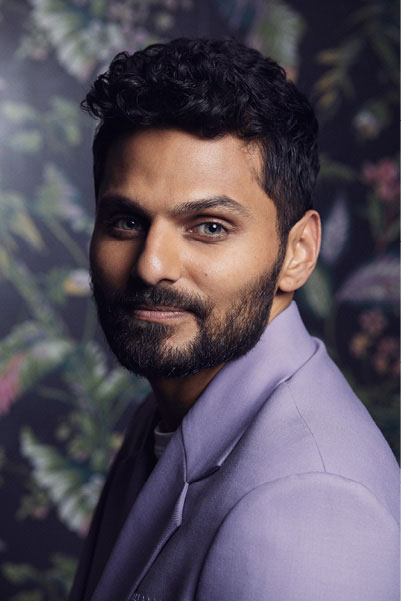
Sounds simple enough. But the back catalog of his On Purpose guests—many of whom are stars of sports, business, health, and entertainment—demonstrates how many people at their peaks are still just human beings in midstream. Take the episode from April 2021 with Will Smith, in which the actor says he and his family, “just trying to find our way in this world,” study a variety of spiritual and philosophical traditions. “At the core of all the spiritual teachings I’ve seen,” Smith tells Shetty, “how you treat your neighbor is central.… If you ask yourself that question, Well, in this situation, how would I have them do unto me? and you did that, you’d never have a problem. Because the answer is never going to be, ‘I think they should curse me out and spit on me and whoop my ass, cause I was trippin’.’”
It’s a great delivery—ancient insight, offered with a new spin. “It’s the most simple,” Shetty replies, “and yet the most profound.” The men share a laugh. But in 2022, having seen Smith slap and curse out Chris Rock during the most recent Oscars broadcast, Smith’s words seem oddly prescient—and telling. Everyone is, in some way, struggling to be the person they try to present to the world. Shetty has a knack for getting to those revealing moments.
“When we launched On Purpose, I don’t think we knew it at the time, but it was the perfect centerpiece for his personal brand,” says Bradley Denham, Shetty’s longtime podcast producer and the founder of Record Edit Podcast. “It’s about keeping the listener in mind—we’ve really tripled down on that. They’re not listening for Jay. They’re not listening for the guest. They’re listening for how the conversation can change their own lives. Jay really tunes into that.”
* * *
Back in the Manhattan event space, as the photo shoot progresses, even mission-driven Jay Shetty has to wrangle with how he’s going to come off. What do we think of the Western-style shirt with the pearl snaps—is that too cowboy-y? (It is decided that, without the cobalt suit, the answer is yes.) What do we think about sitting on the back of the couch—does that look cool? (Yes, but only at a certain angle.) Are these the right socks for this suit? (Not quite, let’s find blue ones.) Rotate the hips, move the left hand, throw in some movement. Beautiful, love it, genius, nice, now smile.

That part, at least, comes easy to Shetty. His brand is decidedly one of affability and the everyday ease of someone who has put in the work. He has managed to dodge the two aspects of personal branding that, for most people, are unthinkably frightening. The first is inauthenticity: What happens if you adopt a persona that people see right through to your fraud self? The second, arguably scarier, risk is authenticity. What happens if you show your true self to the world, and no one likes you? If you’re a working person, you know how these questions nag at your daily decisions. That goes double for anyone whose work requires participating in some sort of digital media platform.
Here’s Shetty’s hack on how to reframe the task of creating things for people to watch, read or listen to—making “content,” in a single, sausage-y label: the three magic words are genre, role and format. Break down the question into these parts, he says, and you’ll be able to make things that are as important to others as they are to you.
For genre, consider the five basic feelings that successful (i.e., viral) content tends to deliver: adventure, humor, emotion, inspiration and surprise. For any of those, your role is whatever draws your attention and uses your talents: host, writer, editor, photographer, composer, cinematographer, whatever lets you show off your best self. And the format, for most creators, is equally important: documentary, vlog, scripted, unscripted, interviews, found footage—or some combination thereof. Choose the right format for your role, or vice-versa, and drive toward one of those five elemental sensations, and you will have created, well, a brand.
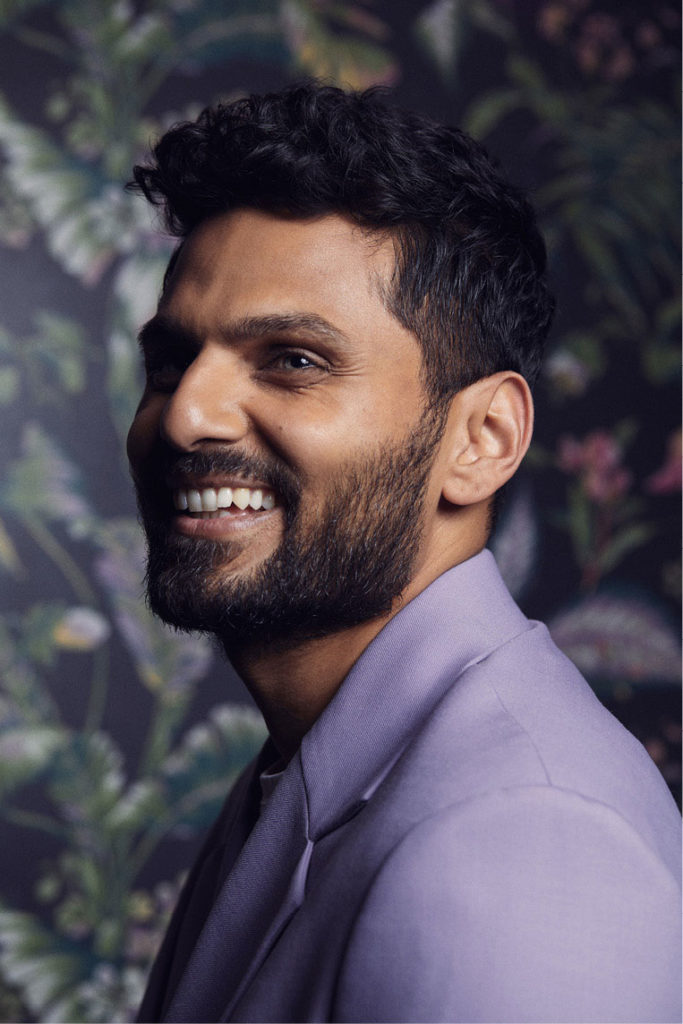
“You’re not thinking about how you’re perceived,” Shetty says. “You’re thinking about how does someone feel after they engage with who you are. That’s what a brand is. A brand is how someone else feels about how you engage. What you have to ask yourself is: Do you want to want to feel the way you feel while they feel the way they feel?”
He laughs as he says this, because he knows how convoluted it sounds. But this question of how much to give of your authentic self is at the heart of Brand Jay Shetty. He moved to an ashram because he wanted to be a monk, not because he wanted to vlog his meditation. And when he wrote about the experience, he instructed his readers on how to think like a monk, knowing almost no one would want to live like one.
Now as an ex-monk, he’s always going to think like one. If that’s what you like about him? Then that’s his brand. Or if you value his suggestions on how to navigate a national tragedy? Then that’s his brand. Or you just dig the personal stories he coaxes out of celebrities? Then that’s his brand. And if, after listening to him, you can better create things that connect you to other people? Then that’s your brand. It’s a good look on you.
This article originally appeared in the September/October 2022 Issue of SUCCESS magazine. Photos by



